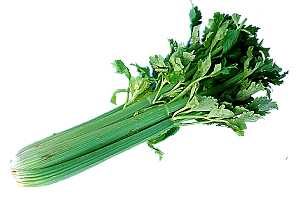Apium graveolens
(Celery)
Seldery [Afrikaans]
Life
> eukaryotes >
Archaeoplastida >
Chloroplastida
>
Charophyta > Streptophytina > Plantae (land plants)
> Tracheophyta (vascular plants) > Euphyllophyta > Lignophyta (woody plants)
> Spermatophyta (seed plants) > Angiospermae (flowering
plants)
> Eudicotyledons > Order:
Apiales
> Family: Apiaceae > Genus:
Apium

Native to Europe and Asia. Cultivation of
celery was undertaken by the Chinese, Egyptians, Greeks and Romans
and three main varieties were developed: Chinese celery, stalk
celery and celeriac. Stalk celery is the main variety used in
southern Africa and typically is used in salads and in soups.
Wild celery is native to Europe and Asia and has
become naturalised in other parts of the world, such as southern Africa.
Cultivation of celery was undertaken by the Chinese, Egyptians, Greeks
and Romans Three main types of celery were developed:
-
Chinese celery (var. secalinum).
As the name suggests, this originated in China. It has a strong,
bitter taste and is used more as a herb than as a vegetable.
-
Stalk celery (var. dulce).
Originated in Italy. Has a mild taste and is used mainly as a
vegetable e.g. cut up into salad or used in soups. The main
variety of celery used in southern Africa.
-
Celeriac or Turnip-rooted celery (var.
rapaceum). Originated from stalk celery and
distinguished by the swollen, turnip-like roots. Used mainly in
Europe. Celery salt is extracted from dry, powdered celeriac.
|
